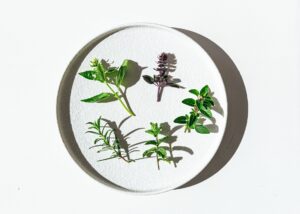Genetic engineering or genetic engineering is the targeted use of technical means at the molecular level in order to use the genetic information of microorganisms, plant, animal or human tissue in the sense of anthropocentric goals. When organisms are genetically manipulated, the chemical basis of the genetic information of cells is changed: DNA (deoxyribonucleic acid), also called DNA (deoxyribonucleic acid). The DNA structure resembles a rope ladder, the rungs of which are formed from a pair of two of the bases adenine and thymine or guanine and cyrosine. Their sequence contains the actual genetic information and determines the exact structure of the proteins.
The special field of work in genetic engineering is the in vitro linkage of nucleic acid molecules to form new, reproducible molecules, which can then be introduced into a recipient organism, so that the newly combined molecules multiply in this organism.
Areas of application
Many products in the medical or food technology sector, such as insulin or vitamins, are already being manufactured by industry with the help of genetically modified bacteria. In modern agriculture, crops such as maize or soybeans are artificially “improved” (what arrogance), in technical terminology this means: genetically optimized. For example, resistance to pesticides or pests is built in or the composition of the ingredients is influenced, for example in terms of a higher oil content. According to the latest findings, genetic engineering processes are not without risks. The danger of “transgenic mutations” deserves special attention: modified genes could be unintentionally transferred to other wild-type plants of the same species or even to other species (for example through pollen count). To what extent and under what conditions this gene transfer takes place cannot be defined at the moment and is an important point of dispute between supporters and opponents of “green genetic engineering”.
Genetically modified foods have already conquered the world of goods – without the consumer being aware of it.
Genetic engineering is most advanced in the area of microorganisms, but is also gradually conquering the area of seeds. It is of economic interest that sterile seeds, which are therefore unsuitable for re-sowing, are bred in order to force farmers to have to purchase the expensive seeds again every year and not to become independent of the relevant corporations through harvesting and sowing. As a global player with a particularly pronounced economic interest in terms of seed neutralization and patenting, the Monsanto company must be mentioned at this point. It is obvious that genetic engineering fits well into the concept of food design, because it creates food and raw materials made to measure for the modular system of food designers.
Examples
- On the market since 1994: “Flavr Savr slush tomato” from the USA, which is harvested green, remains firm and red for three weeks without a natural ripening process. (The project now seems to have failed.)
- Monsanto soybean: on the market since the end of 1996, used in more than 50,000 foods.
- genetically modified new potato varieties, resistant to herbicides
- genetically modified maize with increased resistance
- Antifreeze gene for vegetables
Risks of genetic engineering
It is difficult to have as objective a discussion as possible about the advantages and disadvantages of genetic engineering, as the topic repeatedly proves to be extremely complex and there are many personal resentments. From the point of view of holistic nutritional therapy, some of the most important arguments against the use of genetic engineering are given below:
- There are no long-term studies on the effects or interactions with other organisms. (Why should one intervene in nature at all)
- External evidence of genetic manipulation is not possible.
- Microbes that are out of control are capable of reproduction and have no natural enemies, which could lead to an imbalance in the ecosystem.
- A retrieval of genes once released is practically impossible.
- There is a risk of unforeseeable “new combinations”.
- The adaptability of the organisms to suboptimal environmental conditions decreases.
- Genetically modified organisms not only get into the environment through food: they can also exchange genetic material with the pharynx and intestinal flora of humans.
- There is an increased allergy potential.
- It also has to be questioned whether the body can properly metabolize genetically modified foods. (Note: Anyone who intervenes in nature always weakens!)
- The possibility of genetic manipulation helps to produce quantity rather than quality.
- Small and medium-sized farms cannot withstand competition from large companies.
- Finally, there is a risk of job losses in agriculture
Note: Anyone who intervenes in nature – always weakens!







